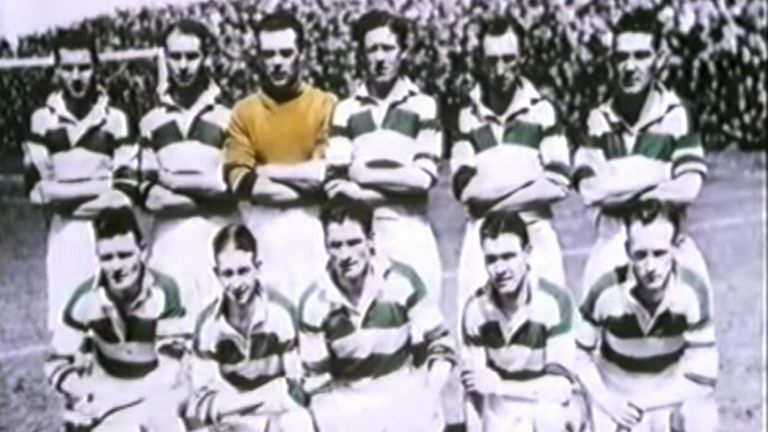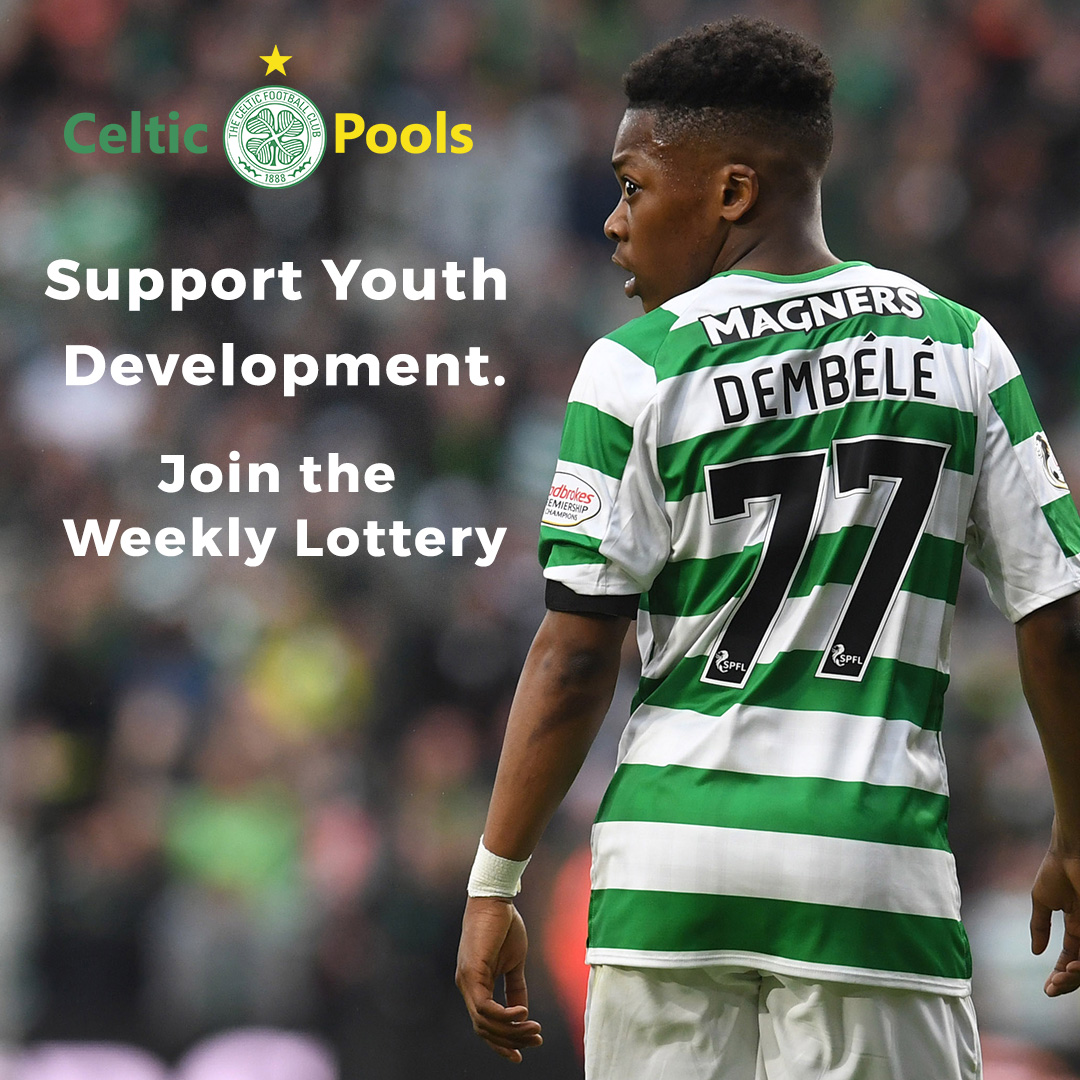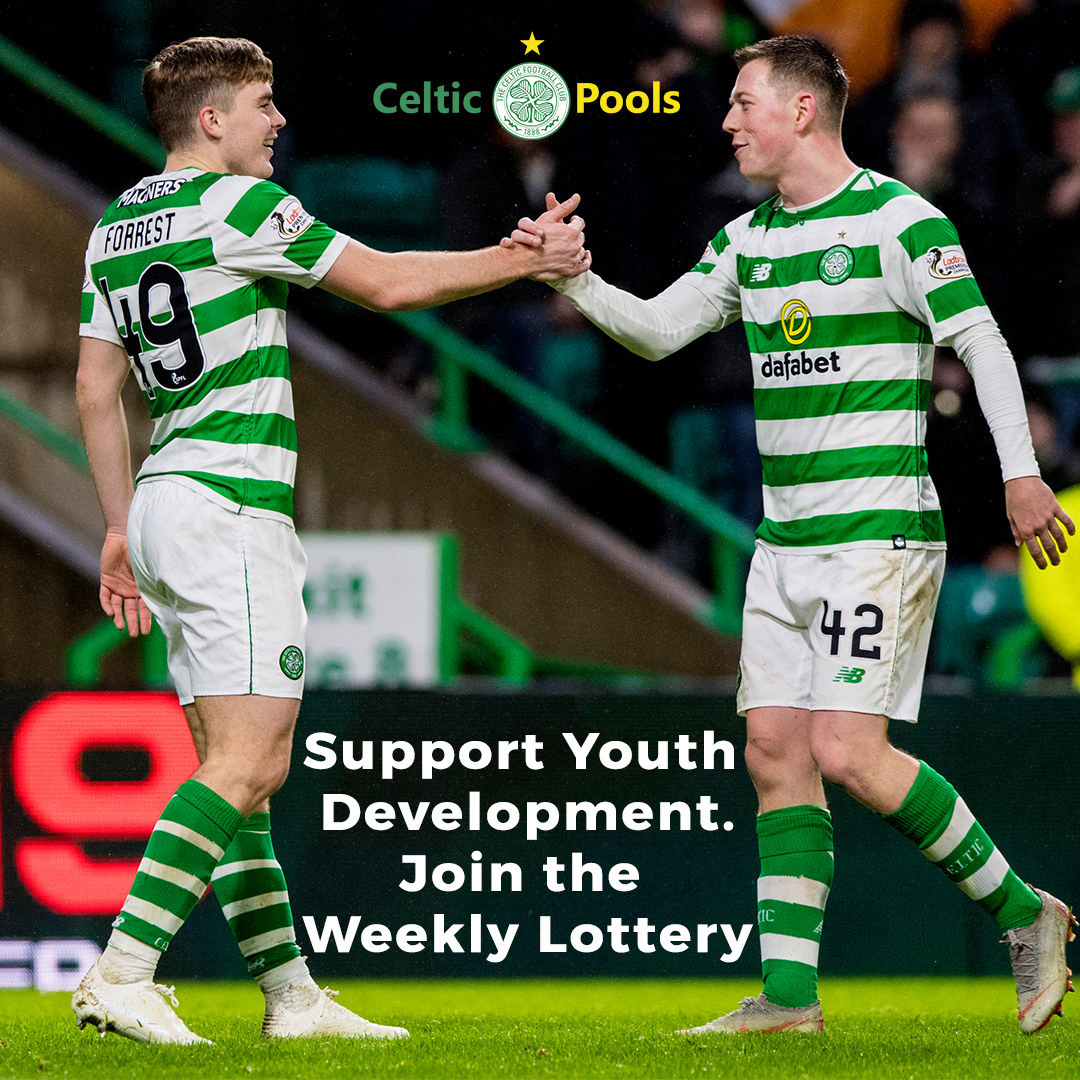Celtic’s very earliest, closest and most important friendship would have to be that with Belfast Celtic. Celtic had toured Belfast in 1889 and drew crowds of over 8,000 for victories against Distillery and United Belfast. It was the club’s first tour and full season, so the crowds for that era were quite staggering.
The Belfast Celts were formed in 1891 and were established in the image of Celtic Football Club. The moulding of the new club, in its design, extending to include its association with charity, the attractive style of football and an indiscriminate signing policy. The club Chairman, James Keenan, suggested the name ‘Celtic’ and Secretary, Bob Hayes, wrote to the Glasgow namesake for their blessing in using the title. Not only did he receive as much, but a sizable financial donation was also offered in response.
By 1901, the club became a limited company and had to register as ‘Belfast Celtic Ltd’ because ‘Celtic Football Club Ltd’ had already been taken. Their football was played on Donegal Road in West Belfast at a multi-purpose facility named Celtic Park: ‘Paradise’ to the Belfast Celtic fans. The stadium actually became the first in Ireland to host greyhound racing (in April 1927) and continued to be used a greyhound track right up until the 1980s.
Belfast Celtic enjoyed very early success, winning the Irish League title in 1899/1900. Their ascendancy and wider symbolism generated big support and they soon became the beacon for the Nationalist community. The Celts had phenomenal ability to draw fans from across the 32 counties of Ireland, so much so that special train services were provided for supporters from Dundalk and smaller towns in County Louth. However, most match goers came from Ulster.
Many people throughout Ireland would follow Belfast Celtic but also the results of their larger namesake in Glasgow. This was reciprocated in Scotland, where an affinity to their County Antrim counterparts was certainly felt. In terms of actual attendance, of course, in that era financial limitation would restrict the ability to travel across the sea on a regular basis.
Savoured it was when the two teams met. On all but one occasion, the match was held at Celtic Park (Belfast), giving the Irish fans a great opportunity to see their beloved teams. Celtic of Glasgow shared the field with the Belfast outfit on no fewer than 16 occasions, the latter winning just twice. Naturally, huge crowds were lured, and gate receipts were often donated to charity.
1897 Belfast Celtic 0-4 Celtic
1902 Belfast Celtic 0-1 Celtic
1904 Belfast Celtic 1-0 Celtic
1910 Belfast Celtic 0-1 Celtic
1911 Belfast Celtic 0-1 Celtic
1915 Celtic 4-0 Belfast Celtic
1925 Belfast Celtic 0-3 Celtic
1926 Belfast Celtic 2-3 Celtic
1927 Belfast Celtic 4-2 Celtic
1928 Belfast Celtic 0-1 Celtic
1929 Belfast Celtic 4-7 Celtic
1930 Belfast Celtic 1-2 Celtic
1932 Belfast Celtic 0-3 Celtic
1936 Belfast Celtic 1-2 Celtic
1947 Belfast Celtic 4-4 Celtic
1952 Belfast Celtic 2-3 Celtic
One of the key components of the friendship was Charles Patrick Tully – Ireland’s original superstar. He was quite a character and a wonderful entertainer. Not only is Tully a legendary link between the clubs but he was the centrepiece behind Glen Daly’s Celtic Song. The bulk of the words to Glen Daly’s tone are documented in a 1927 Belfast Celtic match programme, further proof that they owned the song first. Tully was a fanatic and brought with him, to Glasgow, the famous anthem.
Tully didn’t just bring a song with him – he also brought a wealth of talent and trickery. That talent was nurtured in a typically mischievous manner at St Kevin’s School in Belfast. He regularly found himself in trouble for playing what was regarded as a foreign game (soccer) on the premises. Tully skippered the school Gaelic football team and also played hurling. In spite of his prowess in the Gaelic codes, it was always association football that he really wanted to play.
Whilst still young, Tully was called up to fill in for a local soccer team at Falls Park. He impressed so much that the legendary Jack Myles came to hear of his ability. Myles was a famous former athlete and then school teacher at Millford Street School. It was renowned for producing footballers. Incredibly, Myles arranged for Tully to be transferred to his institute and sorted him employment as a ball boy at Belfast Celtic. Charlie found himself in an environment where he could freely play soccer but still enjoy the Gaelic games. He won a junior medal in Gaelic football, but his soccer really started to shine.
Belfast Celtic’s coach, Willie MacDonald, had begun to take note of Tully’s performances. MacDonald elected to play him against Glentoran in 1942. For once in his life, Tully fell speechless. Jack Vernon, a club legend, had to put Charlie’s shirt on and insert shin guards such was his shock. Equally shocking was the fact that the occasion marked the first time that he wore shin guards as opposed to stuffing newspaper down his socks. He had much more to say on the park and so did the press the next day when they claimed: ‘This schoolboy is an outstanding discovery of the future.’
Belfast Celtic sent Tully out on loan to Ballyclare Comrades and Cliftonville to gain experience. He built on his slender physique and by the mid-1940s he had coveted a regular starting place in the team. It was during this period that his magical playing style and charisma earned him the nickname of ‘Cheeky Charlie’.
Tully’s finest moment in Irish football probably arrived on April 27th 1947, when he scored the winning goal against Glentoran to hand his beloved Celts the Irish Cup. Robert Kelly had spotted Tully during a friendly against Glasgow Celtic a few years prior. He famously said: “Tully would do well here. Our support would appreciate him because he plays the Celtic way.” He finally made the move after he had helped the Belfast boys to win the Irish League title in 1948. By contrast, the Scottish outfit had escaped relegation by the skin of their teeth. Some view the desperate situation of Glasgow Celtic as a catalyst for the signing.
The deal was sewn up very quickly and Tully said upon signing: “It took me three hours to decide on the Timalloys as opposed to the English glamour clubs, it had always been an ambition of mine to play for the great Scottish club.” An admired magician on Irish shores, he would cement his place in Glasgow folklore by producing several magic moments throughout a wonderful 11 years at the club. In 1953 Tully took a corner kick against Falkirk at Brockville. He curled the ball straight into the net, only for the referee to disallow it. Charlie simply retook it and did the exact same again! He had in fact scored direct from a corner on another occasion for Northern Ireland against England. Cheeky Charlie was involved in the memorable Coronation Cup winning side and played in the demolition of Rangers in the 7-1 Scottish League Cup Final of 1957.
If he was loved back home then he was adored in Glasgow. Before long ‘Tully cocktails’ and ‘Tully ice-cream scoops’ had arisen in Scottish cafes. Such was the stardom he gained that he actually began writing a weekly column for The Evening Citizen newspaper, called ‘Tullyvision’.
Ironically, Tully scored against Belfast Celtic in the last meeting between the two Celtic clubs. That particular fixture featured a certain Jock Stein, who was colossal at the heart of the Celtic defence. Tully was an icon, synonymous with both Celtic editions.
For all Celtic’s visits and the Tully connection, one of the most influential aspects of the relationship was actually the demise of Belfast Celtic. The club had shattered most Irish records by the outbreak of World War II and looked set to continue in similarly dominant fashion. However, a partitioned Ireland and a changing society would play a key role in post war football.
Belfast Celtic faced Linfield at Windsor Park in December 1948, before a crowd of 27,000. Linfield largely represented the Unionist community of the North of Ireland. Contests as these were often fiery and this occasion was no different. Linfield finished the match with eight men on the field, Belfast Celtic with ten. However, it was the brutal actions of the Linfield support that would steal the headlines and forever change the future of Irish football.
Belfast Celtic’s Jimmy Jones had collided with Jimmy Bryson in the Linfield defence. Bryson sadly broke his ankle on impact. The stadium announcer relayed information to the crowd that Bryson’s leg had been broken, further inflaming the local support. The home side actually had another player taken to hospital for severe bruising, which only made the crowd vent more poison. Amongst mayhem, the Celts were awarded a penalty. Harry Walker scored and the Nationalist’s looked set to take the points. The atmosphere turned so sour that many Belfast Celtic fans left early to avoid the predictable trouble. There was no segregation, just a small band of Royal Ulster Constabulary officers.
With only four minutes left, Linfield equalised. Hatred and jubilation combined as the fans spilled on to the pitch. Order was quickly restored, and play was petered out. Sadly, that was not the case at the full-time whistle as thousands of Linfield fans ran onto the park and attacked Belfast Celtic players. Jones was isolated. Given that he had injured Bryson and was a Protestant playing for the ‘wrong side’, he was made a target. He made way for the running track in a desperate attempt to get up the terracing and shake off his attackers, but they dragged him back down the stairs, laying into him with kicks and punches by the dozen. His life was now in perilous danger. Linfield supporters jumped and stamped on Jones’ leg repeatedly. The police had no control and it was only Sean McCann, Jimmy’s close friend and Ballymena goalkeeper, who came to his aide. But the damage had been done and the leg was badly broken. He was rushed to Musgrave Park Hospital, where they managed to save it, though it is now an inch and a half shorter than the other. As a result of the attack, the Irish Football Association ordered Linfield to play two matches away from Windsor Park stadium.
Belfast Celtic officials called an urgent meeting to discuss the repulsive attack. It is believed that an outcome was agreed here but nothing was publicly announced. After fulfilling the rest of the season’s league commitments, the club embarked upon a tour of the USA in 1949. It was extremely successful and saw the Scottish national side (then British champions) famously defeated. The Scotland squad refused to speak to their Belfast opponents and ignorantly dismissed them, confident of certain victory. Belfast Celtic returned the serve by winning 2-0 with goals from Derry men Alec Moore and Johnny Campbell. Scotland promptly swore never to play a club side again lest they suffer a similar crushing humiliation as the one levied at Triborough Stadium in New York.
Soon after returning from the glamour excursion, it was announced that Belfast Celtic would withdraw from the Irish League. There was time for one last meeting with Glasgow Celtic in 1952 and a handful of friendly matches; the last being an emotional farewell against Coleraine. After which, the club completely disbanded.
The significance of Belfast Celtic’s disbandment from a Glasgow Celtic point of view was that the overwhelming majority of fans now pledged their sole allegiance to the Scottish club. Glasgow Celtic was an already established worldwide institution, having won exalted competitions like the Empire Exhibition Cup and had distinguished tours of Europe and the USA themselves. Supporters clubs were formed the length and breadth of Ireland, the first in St Mary’s (Belfast) in 1952. It was formerly a Belfast Celtic Supporters Club. This transformation made travel to Scotland a touch easier.
As The Troubles kicked off, the Irish based contingent brought with them a hardened Republican mindset into an already politically minded diaspora. The Troubles were very emotive and certainly would have stimulated the political nature of the support and their songbook regardless. Though, the fact that many travelling over were directly affected, intensified and shaped Celtic’s identity to some degree.
In 2003, the Belfast Celtic Society was formed to resurrect the memory of the club. In 2010 they immortalised it by opening a museum on the site of the old stadium. Sadly, the Celts’ former home is now a shopping centre but nevertheless, the museum brings everything to life with a stack full of memorabilia and historical information. Whilst launching that project, the Society has also created the Belfast Celtic Trail. The route takes you on a journey to pivotal sites in the club’s history. It is largely entwined with Irish politics, the social conditions and Celtic Football Club alike. The trail proves popular for many Celtic supporters and is a wonderful way of exploring the connection.
A smaller version of their inspirators, but a huge club by Irish standards. A grand auld team indeed.
Support Celtic Youth Development
Help raise money for Celtic Youth Development by joining the £1 weekly lottery and you could win up to £25,000 – just click on any one of the photographs below to join. Lots of our readers have already done so and they’re now doing their bit to help fund Celtic Youth Development that can deliver the stars of tomorrow and beyond. And you might even win a few bob too! And a special thank you to all The Celtic Star readers who have already signed up and are now supporting youth development to give us the Celtic Stars of the future…





